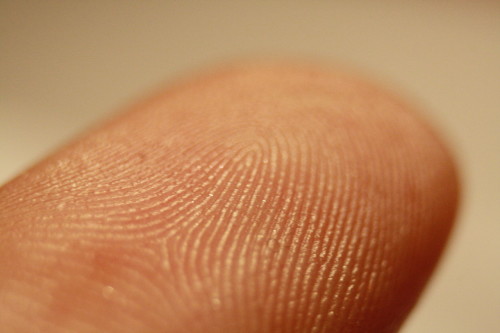
Easily recognized: could you do fingerprint analysis? (CC BY 3.0 / Frettie)
By Hamish Johnston
Do you have the pattern-matching skills needed for identifying fingerprints? If so, researchers at National Institute of Standards and Technology in the US want to hear from you. They have put together a visual quiz that tests your ability to “focus on minute visual details that would leave most people cross-eyed”. You can try the test here.
If fingerprints aren’t your thing, perhaps could you judge the intellectual prowess of a scientist by their looks? Surely not, but a study by psychologist Will Skylark of the University of Cambridge and colleagues suggests that people do judge scientists by their looks. The researchers found that people rated good-looking scientists as being less competent than researchers of ordinary appearance. You can read more in this article in the Telegraph, which features a photograph of physics heartthrob Brian Cox.
Should undergraduate physics students know that the Standard Model is an SU(3)xSU(2)xU(1) gauge theory and what that means? Yes, according to cosmologist and science writer Sean Carroll – who said so in a recent tweet. The inevitable backlash seems to have started with Chad Orzel, who begged to differ in his column in Forbes. “I’ve had a pretty good career in physics to this point despite never learning those things as an undergrad,” writes Orzel, who works in atomic and molecular physics. He is backed-up by the blogger ZapperZ, who writes “Considering that about half of BSc degree recipients in physics do not go on to graduate school, I can think of many other, more important skills and knowledge that we should equipped physics majors”.
Guidelines
Show/hide formatting guidelines
this text was deletedwhere people live in harmony with nature and animals</q>
Some text